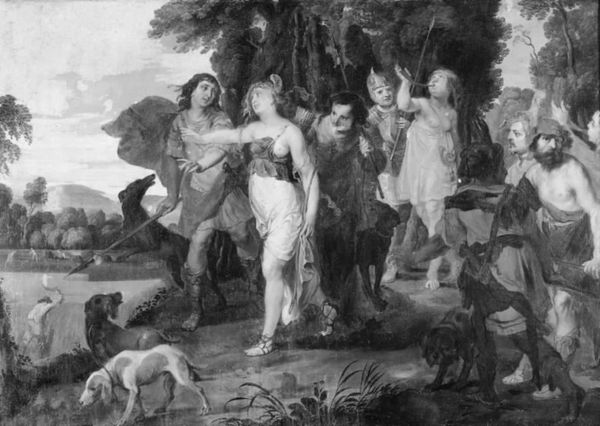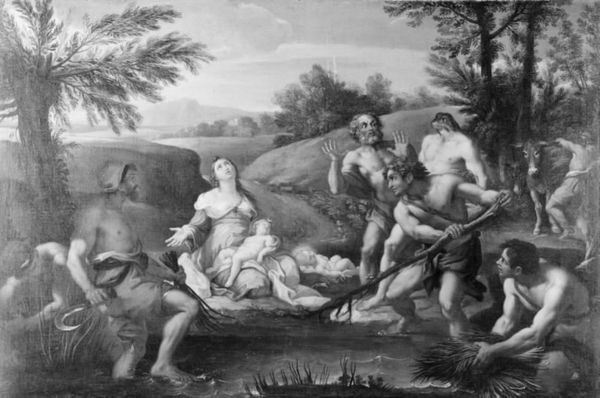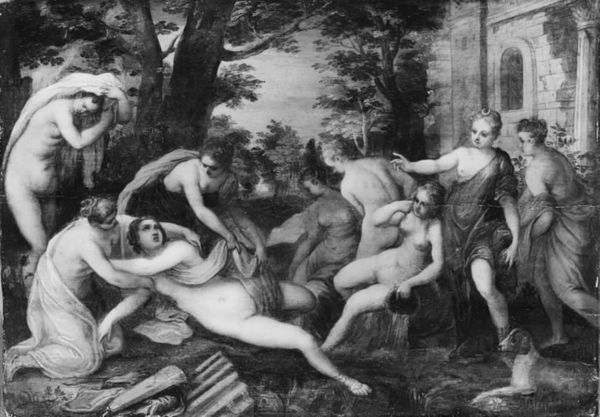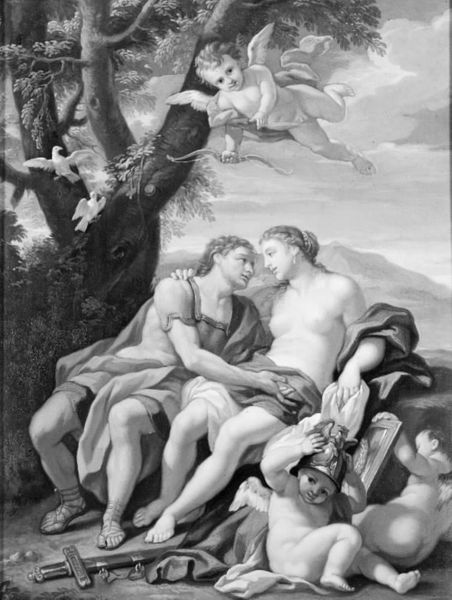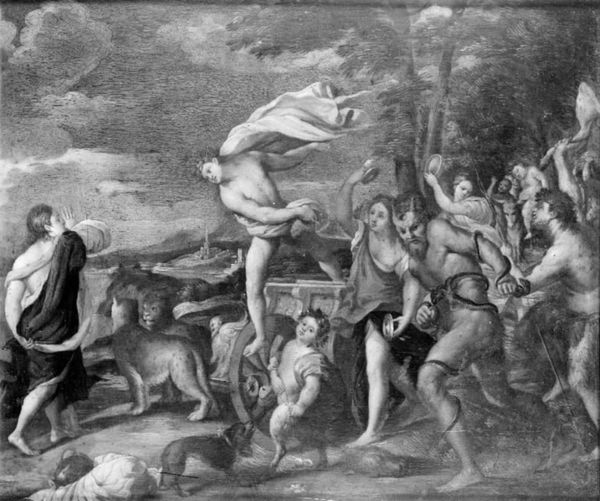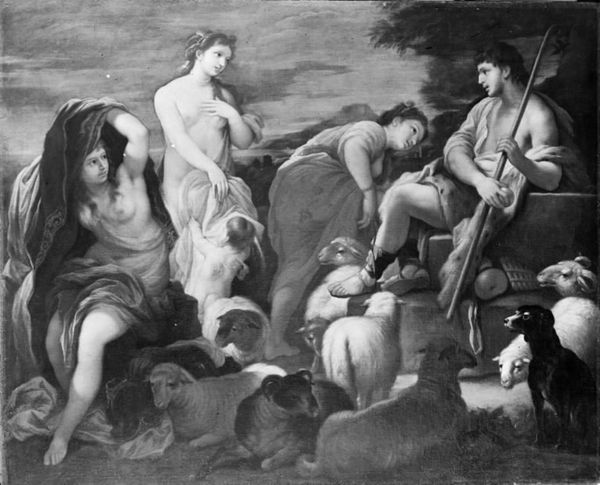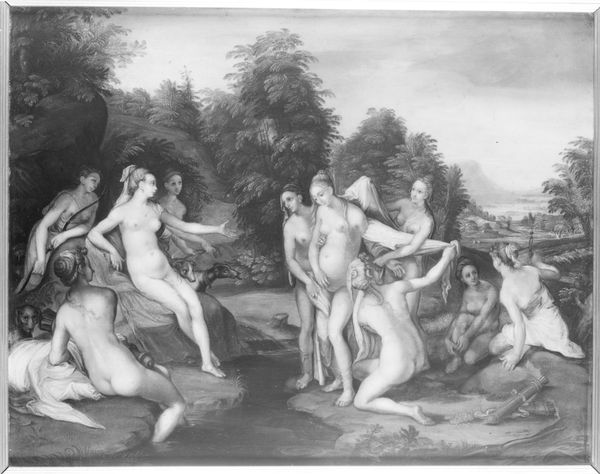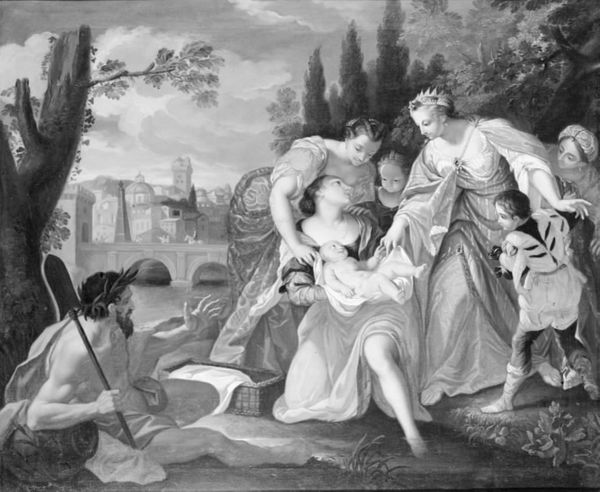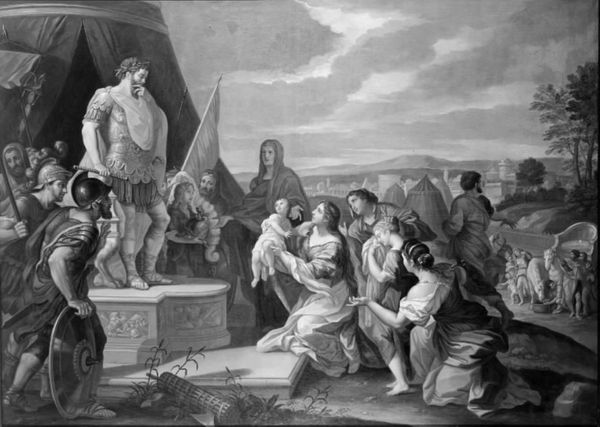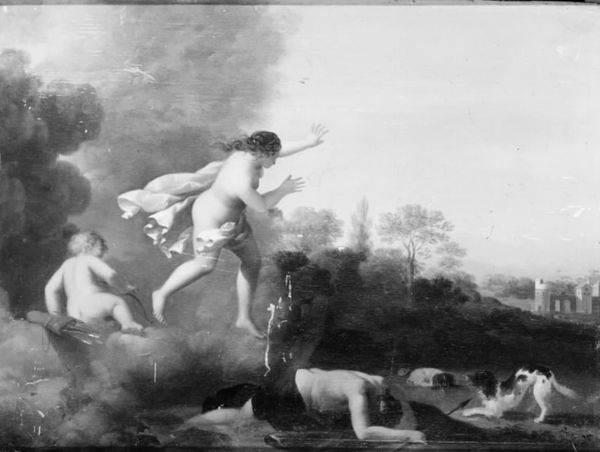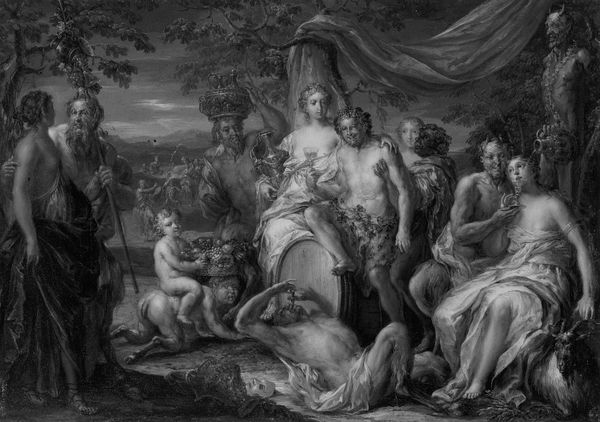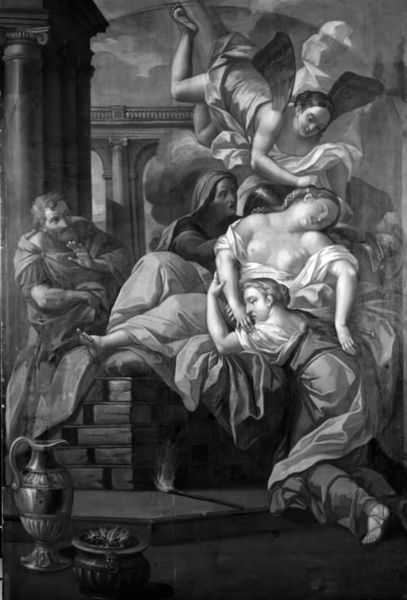
painting, oil-paint
#
allegory
#
baroque
#
painting
#
oil-paint
#
charcoal drawing
#
history-painting
#
monochrome
#
charcoal
#
nude
#
monochrome
Dimensions: 49 cm (height) x 60 cm (width) (Netto)
Editor: We are looking at "Paris' dom," a painting by Hendrik Krock from 1716, using oil paint. Its monochrome quality is very striking. What can you tell us about how it’s composed? Curator: Notice first how the composition functions as a series of carefully arranged planes. The figures, predominantly nude, are presented in a way that prioritizes formal balance over naturalistic representation. Consider how each figure contributes to the overall rhythm of the piece, dictated by the fall of drapery, the placement of limbs, and the precise rendering of musculature. Do you perceive a hierarchy within this arrangement? Editor: It seems that the central figure is set apart by the converging glances from all others; additionally, the central figure is rendered in higher contrast. Would you agree? Curator: Precisely. And observe the relationship between light and shadow, the use of chiaroscuro. It is less about modelling form and more about directing the eye to key compositional elements. Light doesn't reveal volume, but rather serves to define planes and create visual interest. How does this, in turn, affect your interpretation of the artwork’s meaning? Editor: This technique appears to lend it an allegorical quality as if the forms only suggest classical features that they allude to without rendering them realistically. Curator: A keen observation. The artist employs line and form to achieve a balance which creates a harmonious composition that reflects theoretical precepts rather than narrative concerns. Is there anything that strikes you now which you hadn't noticed before? Editor: I am beginning to notice more deeply the geometrical shapes and planes, a series of interlinking diagonal lines across the central figures, which brings it into an aesthetically cohesive piece. Curator: It is through these observations of line, plane, and contrast, that we begin to decipher the work’s structure as something other than representational. Editor: I never knew that this was a formalist approach of this type of art. Thank you!
Comments
No comments
Be the first to comment and join the conversation on the ultimate creative platform.
